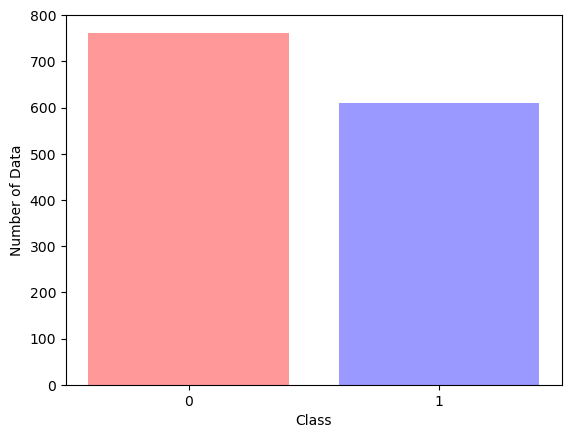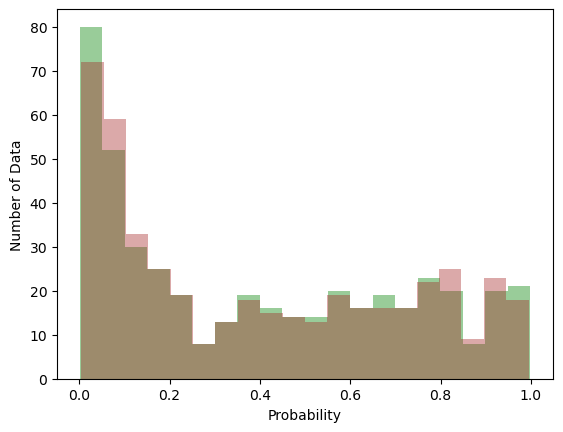import pandas as pd
import numpy as np
import matplotlib.pyplot as plt
import statsmodels.api as sm
from sklearn.model_selection import train_test_split
Probit and Logit Regression
The building block of artificial intelligence
Posted on: September 2023
The fundamental building block of neural network is a model that mimic neuron cell. We can model this neuron using a model that output a value between 0 and 1, zero representing inactive cell and 1 representing active cell. Two populars model that output a value between 0 and 1 are probit regression and logit regression.
Probit and logit regression are family of regression model that model a process that output a value between 0 and 1. Usually, the process is the probability of an event happening.
Both are similar in term of how they model the output, which is using the cumulative distribution function (cdf) of a model. The differecne is that while the probit regression uses the cdf of normal distribution, the logit regression uses the cdf of logistic distribution.
An example of a process that can be modelled with probit regression and logit regression is the banknote data from UC Irvine Machine Learning Repository. This data contains the wavelet result of images.
data_path = "https://archive.ics.uci.edu/static/public/267/banknote+authentication.zip"
df = pd.read_csv(data_path, header=None)
df.head()
| 0 | 1 | 2 | 3 | 4 | |
|---|---|---|---|---|---|
| 0 | 3.62160 | 8.6661 | -2.8073 | -0.44699 | 0 |
| 1 | 4.54590 | 8.1674 | -2.4586 | -1.46210 | 0 |
| 2 | 3.86600 | -2.6383 | 1.9242 | 0.10645 | 0 |
| 3 | 3.45660 | 9.5228 | -4.0112 | -3.59440 | 0 |
| 4 | 0.32924 | -4.4552 | 4.5718 | -0.98880 | 0 |
plt.bar(x=df[4].value_counts().keys(), height=df[4].value_counts().values, color=["red", "blue"], alpha=0.4)
plt.xticks([0, 1])
plt.xlabel("Class")
plt.ylabel("Number of Data")
Text(0, 0.5, 'Number of Data')

X_train, X_test, y_train, y_test = train_test_split(df[[1, 2, 3]], df[4], test_size=0.33, random_state=0)
Probit Regression
The probit model can be written mathematically as:
\[Y = \phi(g(x))\]where $g(x)$ is a linear model
\[g(x) = \theta_0 + \theta_1 X_1 + \theta_2 X_2 + ... + \theta_n X_n\]Probit regression is a CDF of normal distribution.
probit_model = sm.Probit(y_train, X_train)
probit_res = probit_model.fit()
print(probit_res.summary())
Optimization terminated successfully.
Current function value: 0.434708
Iterations 6
Probit Regression Results
==============================================================================
Dep. Variable: 4 No. Observations: 919
Model: Probit Df Residuals: 916
Method: MLE Df Model: 2
Date: Sun, 24 Sep 2023 Pseudo R-squ.: 0.3675
Time: 12:42:13 Log-Likelihood: -399.50
converged: True LL-Null: -631.66
Covariance Type: nonrobust LLR p-value: 1.489e-101
==============================================================================
coef std err z P>|z| [0.025 0.975]
------------------------------------------------------------------------------
1 -0.3449 0.021 -16.506 0.000 -0.386 -0.304
2 -0.2212 0.020 -11.272 0.000 -0.260 -0.183
3 -0.4629 0.036 -13.040 0.000 -0.533 -0.393
==============================================================================
Logit Regression
Logistic regression can be expressed mathematically as
\[Y = \frac{1}{1+e^{-(g(x))}}\]with $g(x)$ as a linear model
\[g(x) = \theta_0 + \theta_1 X_1 + \theta_2 X_2 + ... + \theta_n X_n\]Logit regression is almost the same as probit regression, except that logit regression uses logistic model instead of normal distribution. The CDF of logistic model is called the logistic function and is given above.
logit_model = sm.Logit(y_train, X_train)
logit_res = logit_model.fit()
print(logit_res.summary())
Optimization terminated successfully.
Current function value: 0.437725
Iterations 7
Logit Regression Results
==============================================================================
Dep. Variable: 4 No. Observations: 919
Model: Logit Df Residuals: 916
Method: MLE Df Model: 2
Date: Sun, 24 Sep 2023 Pseudo R-squ.: 0.3632
Time: 12:42:13 Log-Likelihood: -402.27
converged: True LL-Null: -631.66
Covariance Type: nonrobust LLR p-value: 2.382e-100
==============================================================================
coef std err z P>|z| [0.025 0.975]
------------------------------------------------------------------------------
1 -0.5808 0.038 -15.100 0.000 -0.656 -0.505
2 -0.3699 0.035 -10.648 0.000 -0.438 -0.302
3 -0.7805 0.063 -12.299 0.000 -0.905 -0.656
==============================================================================
Comparing Both Model
Many documentation state that probit and logit model result do not differ much from each other. However because of the interpretability of the logit model, this model is used more often in binary regression.
probit_pred = probit_model.predict(probit_res.params, X_test)
logit_pred = logit_model.predict(logit_res.params, X_test)
n_bins = 20
fig, ax = plt.subplots(1, 1)
ax.hist(probit_pred, bins=n_bins, color="green", alpha=0.4)
ax.hist(logit_pred, bins=n_bins, color="brown", alpha=0.4)
plt.xlabel("Probability")
plt.ylabel("Number of Data")
Text(0, 0.5, 'Number of Data')

Intepreting Coefficient of Probit Regression and Logit Regression
Intepreting probit coefficient is more difficult than intepreting logit coefficient. This is because the marginal effect of an independent variable in probit regression is a function of other independent variables.
In contrast, we can interpret logit regression directly to odds. For example from above, the logit coefficient that correspond to independent variable number 1 is -0.5808. Using $\frac{1}{1+e^{-(\theta_0 + \theta_1 X)}}$, we got the log odds of 0.358. This means, if all independent variable coefficients except independent variable number 1 coefficient is zero, an increase in it independent variable 1 will increase the odds of the dependent variable resulting in 1 to 0 of about 0.358. In other words, it reduces the dependent variable.